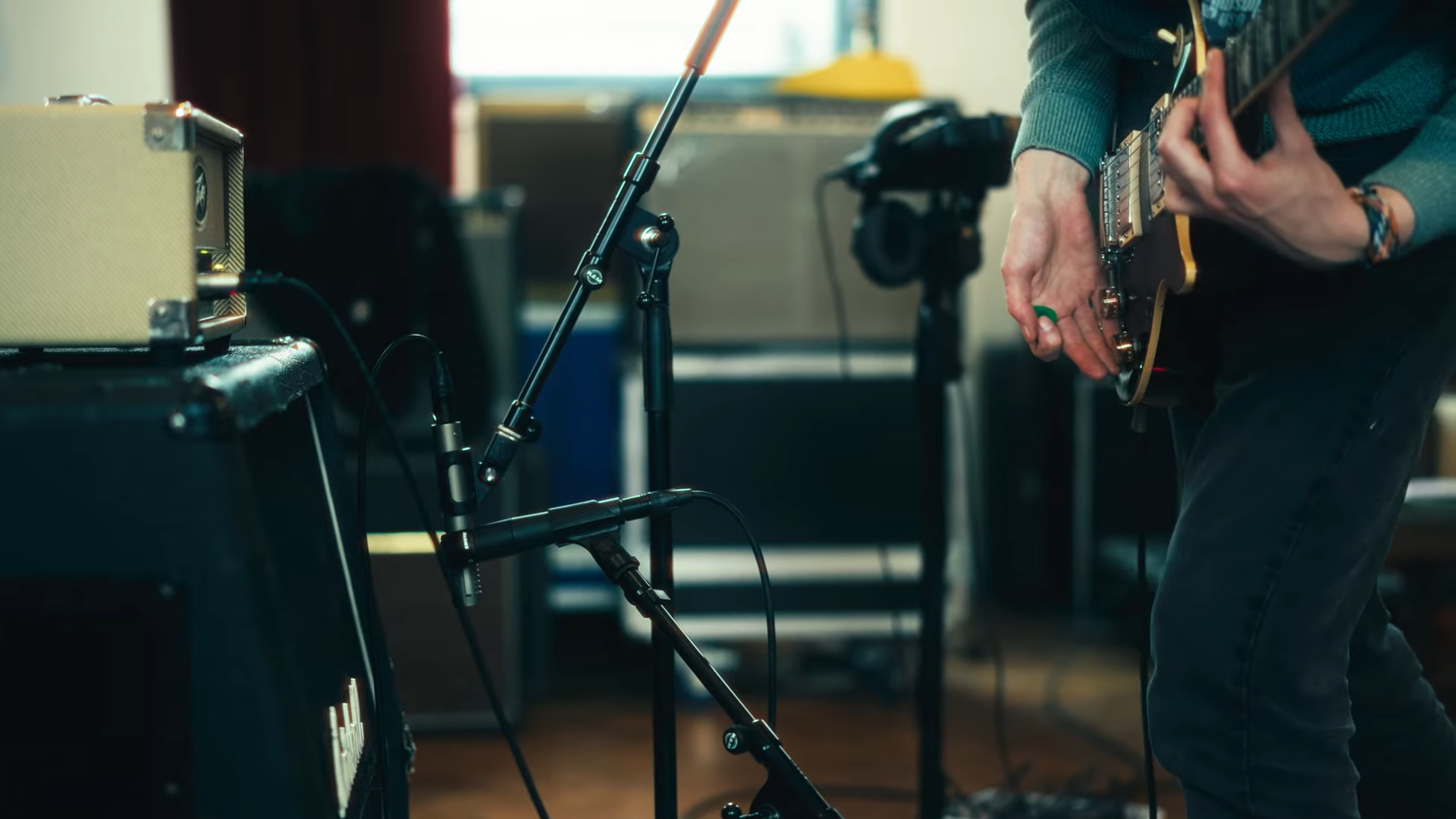The latest release from Fracture Sounds presents us with a first guitar-based instrument. It is the 9th installment in the Blueprint free series of Kontakt Player libraries.
Feedback: A 60-year-old guitar effect
Feedback is a classic guitar effect which rock musicians have used since the early 1960s. It was pioneered by iconic bands like The Beatles and The Who & legendary guitarists such as the great Jimi Hendrix and Queen’s Brian May.
On a technical level, the effect is created when the input of the electric guitar – in this case, a Les Paul Gibson – and the output of the amp cabinet “feed” each other in a cycling loop of clashing soundwaves.
To achieve this effect the old fashioned way, a band’s electric guitarist would play their metal strings close to a high-gain amplifier in order to cause an intentional electromechanical interference.
The proximity of the guitar and the magnetic guitar pickups to the loudspeaker create these sensory vibrations (sound waves) that transmit the output sound directly from the amp speaker back to the guitar pickups – and again – creating this thundering, auditory circuit of colliding signals – called feedback.
Mild and Wild
Blueprint Feedback Guitar provides you with two types of modes – a “Tame” articulation and a “Wild” articulation.
The two articulated modes offer both evolving pads and textural soundscapes. The sound is of a sampled Gibson Les Paul guitar, recorded using the audio feedback technique.

Articulations
The soft articulation, Tame, is a milder tonal interpretation of this distorted electric guitar, and as such, it provides a vibe that is very suitable for the softer sounding ambient genres.
Quality wise, I’d say it sounds decent enough to be usable, but the reason I am posting about this particular Blueprint library is not the Tame articulation. I was actually going to ignore this one completely and skip this #9 issue, but the “Wild” articulation saved the day.
The sounds and the textures presented in the Wild mode are much more impressive. They are bright and resonant, yet not overly distorted and very tastefully saturated.
The instrument itself also seems to have quite a few tonal variations and evolving timbres. It doesn’t have static Round Robins for variation, but instead it has a flowing (presumably LFO-based) playback that changes both harmonically – with octave intervals and perfect fifths – and also dynamically (from bright to soft) with every key press.
At first, I wasn’t too high on this Blueprint Feedback Guitar, but it does seem like a gem the more I play around with it.
In particular, I like how it gradually switches from this thin sounding metallic distortion type of timbre to a more heavy-body, warmer sound, and from a relatively clean, tonally stable sound to this stuttering never-ending evolving texture. It creates a level of interest and depth that some musical compositions could really benefit from.
Microphone Positions
Blueprint Feedback Guitar uses the Perspective microphone-mixing functionality that we’ve already seen implemented in formerly released Fracture Sounds instrument freebies such as the Short Strings and the Gentle Strings libraries.
The Perspective feature allows you to mix each of the provided Close, Mid & Far mic signals all at the same time in a dynamic setup using a distance-based control. For your convenience, there is also a manual mixing setup for the mics.
Smart Pitch Bend
One of the more unique features that Blueprint Feedback Guitar has to offer, which is another innovative move on Fracture Sounds’ part, is the ability to handle MIDI CC-based pitch bend modulations in two different kinds of approaches. You can either use classic (global) pitch bend or you can use the Held Keys Only pitch bend mode, that allows you to isolate played notes into own separate groups – those that are being held (played) in actual time, and previously played sustained tones. Using this function, when you play a note or a newer set of notes pitch bend only applies for those.
You can access this feature and other features by clicking the advanced settings icons. Additional parameters provided are Velocity Response and Release triggers. Available sound design parameters are reverb, delay and Tone (frequency filter).
Blueprint Feedback Guitar is compatible with Native Instruments Kontakt and the free Kontakt Player 7. Supported formats are VST3, AU, AAX & NKS for Windows 64-bit and macOS.




